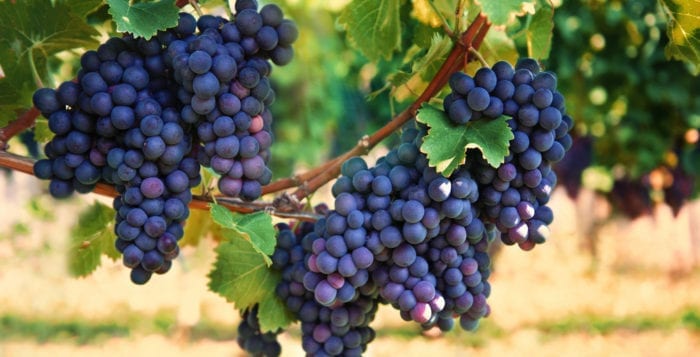Wine and Cheese: Merlot … the blackbird grape
By Bob Lipinski
“Drinking the right wine at the right time is an art.” — Horace A. Vachell

Some believe the name merlot was given to this black grape variety because blackbirds (known as merlau in Occitan in southern France) liked eating its plump, sweet-tasting flesh. Whether the story is factual cannot be determined, but what we do know is the first mention of merlot seems to be in the late 1780s in the Libourne district of Bordeaux, France.
According to DNA testing conducted in the mid-1990s, it was determined that the parents of the merlot grape are cabernet franc and the lesser-known Magdeleine Noire des Charentes grape from France.
Merlot is a medium acid red grape variety acknowledged worldwide as producing some of the finest dry red wines. It is the predominant red grape variety of the Bordeaux region as well as in other parts of France. Merlot is also grown in most wine-producing countries and used in wines from light-bodied and fruity to big, full-bodied wines of structure, tannin and great longevity.
Merlot is used in many red wine blends, offering fruit, succulence, acidity, color and overtones of jam and spices. When bottled as a separate varietal, its flavors can be subtle or dramatic, easily competing with some of the finest cabernet sauvignon wines. Two areas of the world where merlot really excels is the Pomerol district of Bordeaux and, surprisingly, in Washington State.
In the U.S., the Louis M. Martini Winery of Napa Valley, California, bottled the first “Merlot” as a separate varietal, blending the 1968 and 1970 wines from its Edgehill property, which was released in 1971.
Depending on where it is grown, merlot offers a wide spectrum of aromas and flavors. Merlot is generally bright ruby-red in color, producing scented, fruity wines, smelling and tasting very much of bell pepper, berries (blackberry, blueberry, cranberry, raspberry), black cherry, black currants, black olive, black tea, cedar, chocolate, cinnamon, coffee, green olive, herbs, licorice, maraschino cherry, peppermint, plum and spices.
Below are some good examples of merlot I recently had the opportunity to sample:
2014 Heller Estate “Merlot” Carmel Valley, California. Dark-colored with an intense bouquet and flavor of blackberries, black currants and cherries. Full-bodied, tannic and quite youthful with a lingering aftertaste of spicy herbs. Anybody for a rack of lamb with rosemary?!
2014 Boxwood Winery “Merlot” Trellis; Middleburg, Virginia. Yes, Virginia! The wine is dark colored with a full bouquet of spicy black cherries, black raspberries and some oak. Smooth and so easy to drink with a long aftertaste. Serve with some grilled portobello mushrooms.
2014 Selby “Merlot” Russian River Valley, California. Medium-ruby color with a fruity bouquet of fresh and dried berries, mint and hints of cranberry. Baking spices along with some wood and dried plums abound. A dish of pasta with some sun-dried tomatoes works for me.
Bob Lipinski, a local author, has written 10 books, including “101: Everything You Need to Know About Whiskey” and “Italian Wine & Cheese Made Simple,” available on Amazon.com. He conducts training seminars on wine, spirit and food and is available for speaking engagements. He can be reached at www.boblipinski.com or [email protected].







